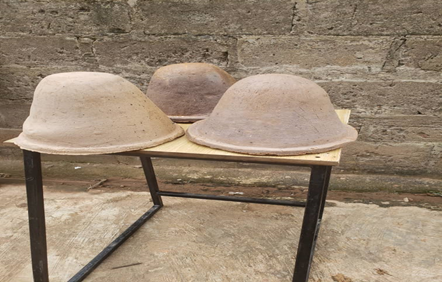Production of Clay-Based Water Filter Using Biomass of Bacillus Subtillis, Sawdust, Activated Charcoal, Periwinkle and Snail Shell as Additives
Keywords:
Ceramic, Chemical-contaminants, Bio-contaminants, Water treatmentAbstract
A Significant proportion of rural households lacked access to improved and safe drinking water due to chemical and microbial contamination. Point-of-use (POU) water filters made from cheap, locally available ceramic materials and additives can achieve quality water parameters. Ceramic water filters were prepared by combining clay minerals with additives. Sawdust was used as a burnout material to achieve porosity and enhance the filtration rate. Silver nitrate, charcoal, periwinkle shell, snail shell, and biomass of Bacillus Subtilis were added in different ratios. The filter was formulated with charcoal, sawdust, snail shell, and periwinkle shell to remove microbes and treat heavy metals through the adsorption process. The filters were molded and fired in a temperature range of (700oC - 900oC). Characterization of the clay mineral, physiochemical and Microbial tests were conducted on the ceramic and water. Antimicrobial test was carried out on the biomass of Bacillus subtilis. Mineralogical (XRD) and elemental analysis of the clay, snail, and periwinkle shells showed high percentage composition of serpentine (a clay crystal), plagioclase, a mixture of feldspar minerals albite (sodium aluminosilicate - NaAlSi3O8), anorthite calcium aluminosilicate- CaAl2Si2O8) and Calcium (70-97 %composition) respectively. The results showed a greater proportion of silica in the clay, suggesting the material is silicate. Filtration rate was estimated at 1.125 L/hr. The result showed the filter has 96.72%, 99.26%, and 66.67% colony removal efficiency for heterotrophic bacteria, coliform, and fungi respectively. The filter showed about 70% - 96% efficiency for the treatment of physiochemical parameters in wastewater.

Published
How to Cite
Issue
Section
Copyright (c) 2023 Damilola T. Ogundele, Yusuf A. Iyanda, Ifedayo J. Akinruli, Christiana O. Oke, Olusanya E. Oludele, Aliru O. Mustapha

This work is licensed under a Creative Commons Attribution 4.0 International License.




